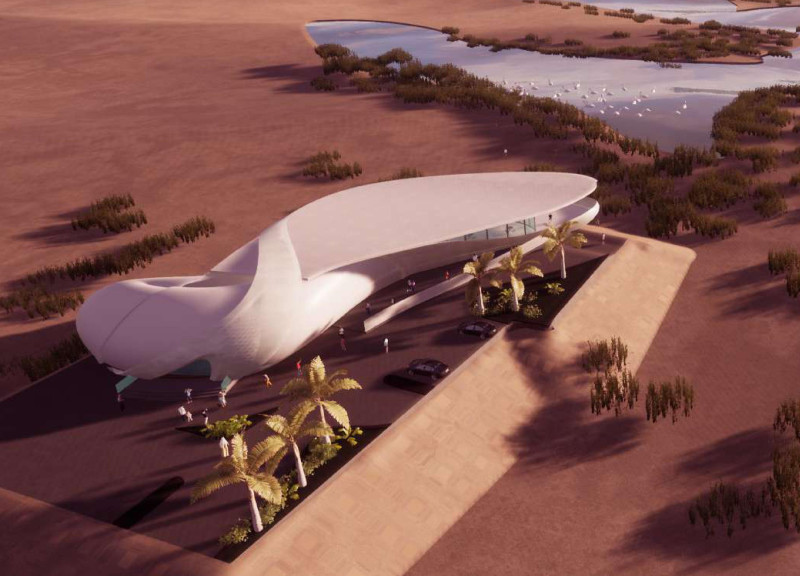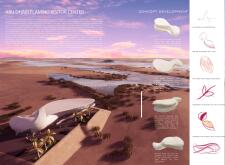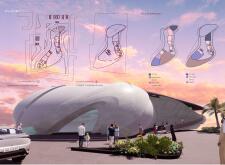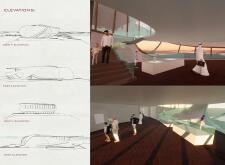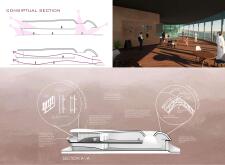5 key facts about this project
The Abu Dhabi Flamingo Visitor Center is located within a rich ecological reserve designed to deepen the connection between visitors and local wildlife. The structure draws inspiration from the graceful shapes of flamingos, featuring smooth and flowing lines that create a sense of movement. This design encourages exploration, allowing visitors to engage with their surroundings in a relaxed and enjoyable manner.
Architecture Concept
The building’s design uses parametric principles, which allow for the creative manipulation of geometric shapes. This results in a flowing relationship between the building and the elevated plaza surrounding it. A large terrace is a central feature, providing sweeping views of the landscape, which enhances the overall visitor experience and highlights the natural beauty of the environment.
Circulation and Accessibility
Careful attention has been paid to circulation throughout the space, making it easy for visitors to navigate the different areas. A ramp connects the various parts of the center, ensuring that everyone can access the facilities. The main elevation includes a large opening that invites views of the surrounding landscape, enriching the visitors' connection to the ecology outside.
Material and Structural Systems
The visitor center features a curtain wall system that reflects the exterior environment within the interior spaces. This design choice not only enhances visual appeal but also supports the goal of sustainability. The structure incorporates concrete along with a space steel framework, creating wide, open areas free of columns. This design allows for flexibility in how the space can be used.
Environmental Integration
The roof's flowing design plays a crucial role in air circulation within the building. This feature helps to regulate temperature and improve comfort for occupants. Large openings built into the roof allow for ample natural light to enter the space, brightening the interior while maintaining a connection to the outdoor landscape through visible views of the reserve.
The focus on ecological consideration and visitor engagement is clear throughout the design, demonstrating how thoughtful architecture can encourage appreciation for nature while fulfilling practical needs. The layout invites visitors to explore and enjoy the environment.


